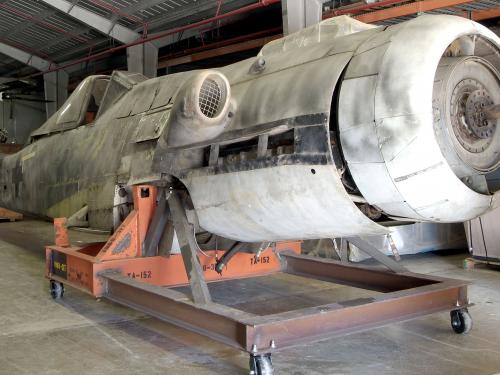
Stories of daring, stories of technological feats, stories of prevailing against the odds ... these are the stories we tell at the National Air and Space Museum. Dive in to the stories below to discover, learn, and be inspired.
Showing 651 - 660 of 698

November 08, 2010
In the years following WWII the United States and her Allies conducted engineering and flight tests of many different types of captured or surrendered Axis aircraft, primarily from Germany and Japan. Many of these aircraft were acquired by Allied and US technical intelligence collection teams. It was ordered that at least one of each type of enemy aircraft be captured and evaluated by these teams, and that each aircraft type be maintained in flyable condition for a minimum of one year. To make this possible all technical data and support materiel available (such as tool kits, parts, etc.) had to also be captured to meet this requirement.

November 01, 2010
Next year, the National Air and Space Museum will begin restoring and preserving aircraft in the brand-new Mary Baker Engen Restoration Hangar, part of the Phase Two complex now under construction at the Steven F. Udvar-Hazy Center. To treat the aircraft, the Museum applies a philosophy and range of techniques that have steadily evolved through the years.

October 27, 2010
Black cats pilot a squadron of flying jack-o'-lanterns in this fairly unscary Halloween postcard

October 14, 2010
On October 14, 1947, Charles E. “Chuck” Yeager became the first person to fly faster than the speed of sound in his Bell X-1, which he named Glamorous Glennis, in tribute to his wife. He reached a speed of 1,127 kilometers (700 miles) per hour, or Mach 1.06, at an altitude of 13,000 meters (43,000 feet).

October 12, 2010
Eugene Jacques Bullard is considered to be the first African-American military pilot to fly in combat, and the only African-American pilot in World War I.

September 28, 2010
The Archives of the National Air and Space Museum holds two million images in various photographic formats, covering the breadth and depth of the history of aviation and space flight.

September 21, 2010
If you don’t already own one, you’ve no doubt seen advertisements for them on television. I am referring to so-called “smartphones,” which can change the orientation of their display, from Portrait to Landscape, depending on how you hold them. They can do that because they contain a fingernail-sized chip inside, which senses the acceleration of gravity, and adjusts the display accordingly. Resourceful programmers have come up with a number of other applications, or “apps,” for these phones, which take advantage of the on-board ability to sense acceleration. If you only use a plain old-fashioned cell phone, you still have a number of these devices around you. Automobiles use them for airbag deployment, stability control, and braking systems.

August 19, 2010
The mystery of Amelia Earhart’s disappearance somewhere over the Pacific Ocean in July 1937 during her around-the-world flight attempt persists to the present day, and is especially alive and well on the Internet.

August 16, 2010
August 16, 1960 featured one of the most memorable aeronautical moments of my adolescence. I can still remember seeing the cover of Life magazine for August 29,

August 07, 2010
On August 7, 1980, Janice Brown flew the Penguin almost 3.5 km (two miles) that day in 14 minutes, 21 seconds. This was the first sustained flight of a solar-powered aircraft and the longest Penguin flight since development had started on the aircraft two years earlier.